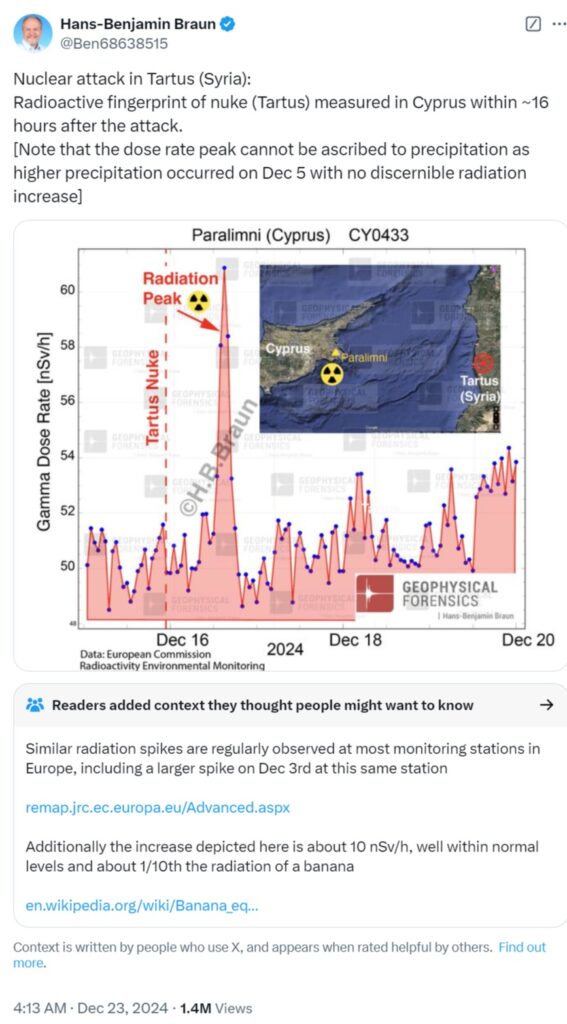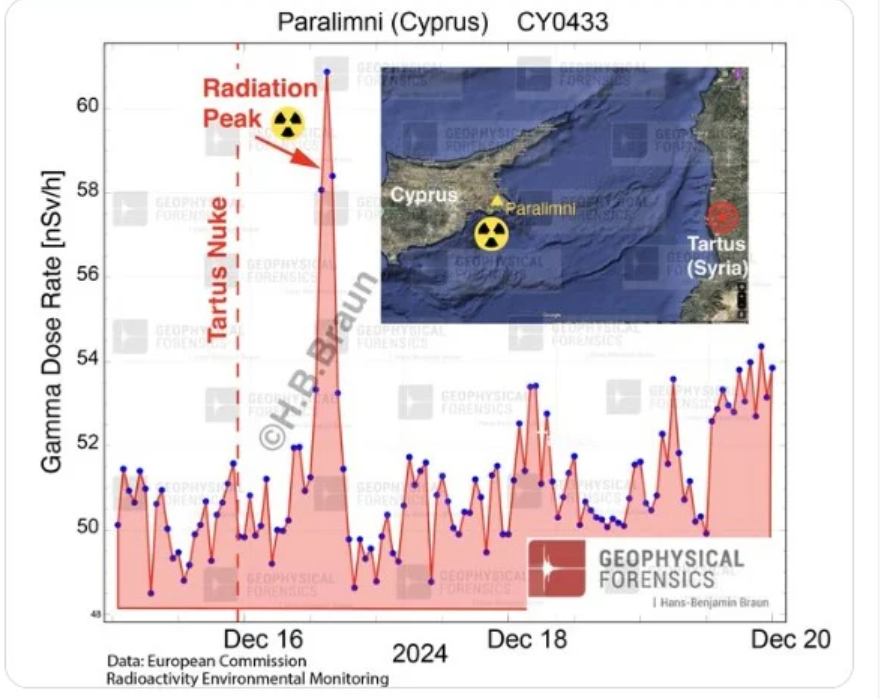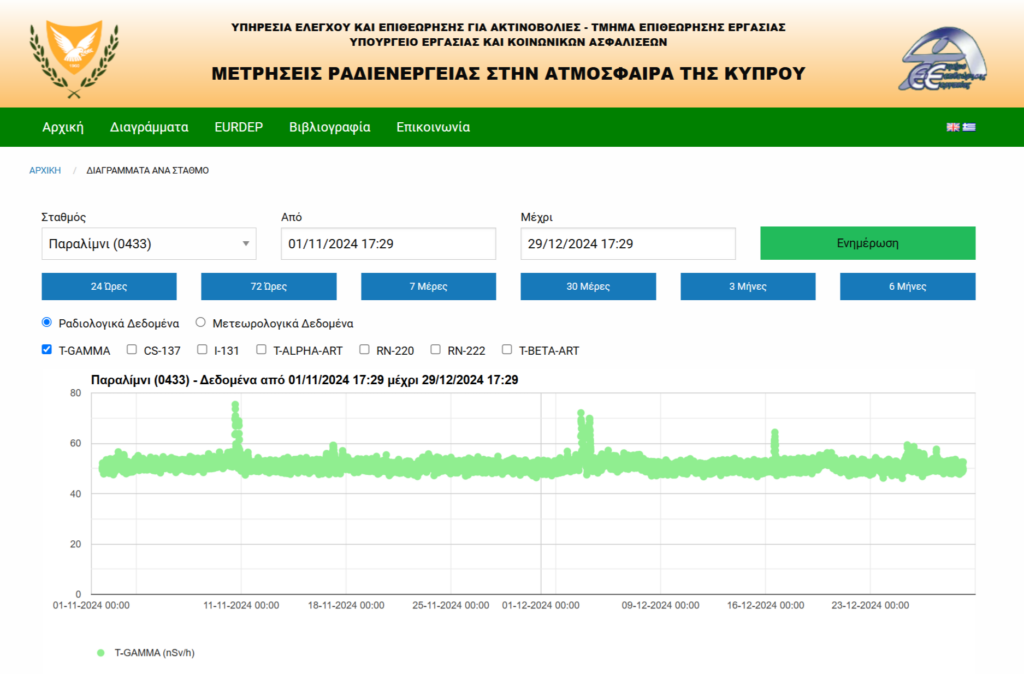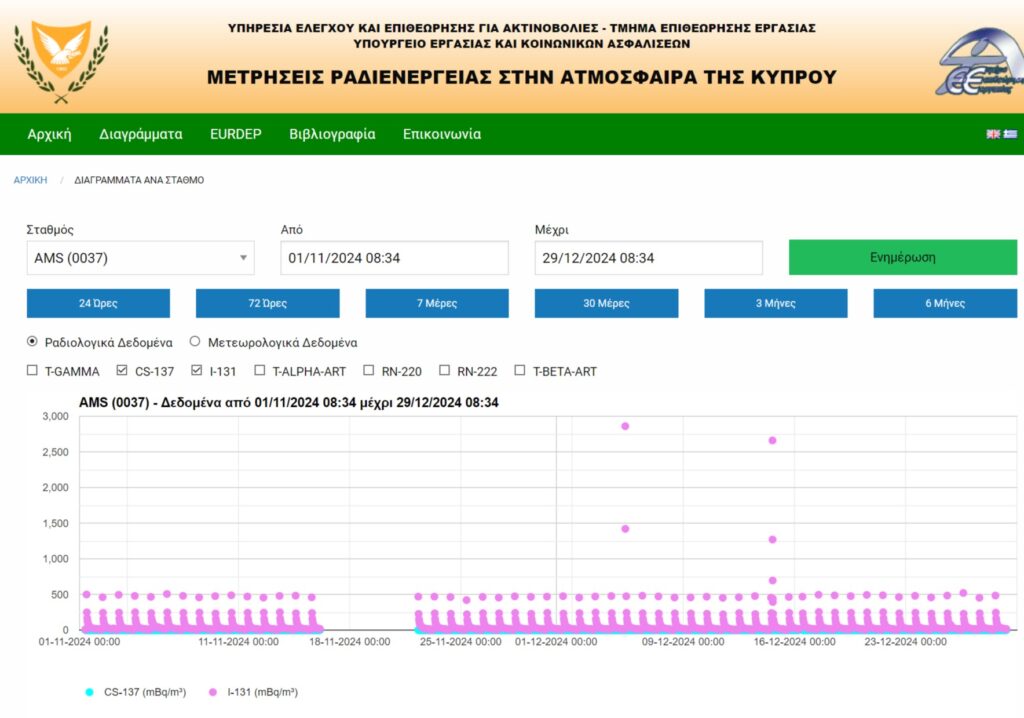CLAIM: Israel dropped a nuclear bomb on Syria, causing a dangerous radiation increase in Cyprus.
CONCLUSION: No nuclear explosion was detected in Tartus, Syria, following Israel’s airstrike on December 15, 2024. The radiation fluctuation recorded at the Paralimni monitoring station was minimal and completely harmless, with similar occurrences happening frequently. There is no danger to Cyprus residents.
A post by Hans-Benjamin Braun on December 23, 2024, which garnered over 1.4 million views:

On December 15, 2024, Israel conducted a series of airstrikes targeting military facilities in the coastal Tartus region of Syria. These strikes aimed to neutralize strategic weapon stockpiles to prevent them from falling into third-party hands following the collapse of the Assad regime.
The intensity of the strikes was extremely high, with reports of powerful explosions registering as a 3.0 magnitude earthquake. This suggests the use of heavy bombs to destroy fortified military sites, as well as secondary explosions of stored munitions. Reports of strong seismic activity led to rumors of Israel using a nuclear weapon, specifically mentioning the use of the B61 gravity bomb, a tactical nuclear weapon available only to the United States.
According to Hans-Benjamin Braun, after the airstrike, an increase in radiation was recorded by the Paralimni monitoring station. Users on X Community Notes pointed out that similar increased readings are frequently recorded at stations across Europe, including a much larger spike on December 3, 2024.

The graph shared by Braun shows an increase of 10 nSv/h (nanosieverts per hour), which is negligible. Natural background radiation typically ranges between 100–200 nSv/h worldwide. High-altitude flights can expose individuals to radiation levels exceeding 3,000 nSv/h. A 10 nSv/h increase corresponds to approximately 87.6 µSv/year, significantly below the 1 mSv/year safety limit set by the International Commission on Radiological Protection (ICRP). See detailed ICRP recommendations here.
The following graph, from the Cyprus Radiation Inspection and Monitoring Service (Paralimni station – 0433), covers the period from November 1 to December 29, 2024, showing similar fluctuations in radiation levels.

Monitoring Systems in Place:
The AMS Station (0037) in Nicosia measures levels of iodine-131 and cesium-137. From November 1 to December 29, 2024, the data shows two spikes in iodine levels. No increase in cesium-137, which would indicate the use of a nuclear weapon, was observed (both can be used in medical applications).

Similar results can be found on the European Commission, EU Science Hub, REMonEU radiation monitoring website, where station-specific results and dates can be selected.
During nuclear fission, heavy elements such as uranium-235 or plutonium-239 split into a variety of fission products, including iodine-131, cesium-137, strontium-90, americium-241, and others. These fission products are created simultaneously, based on the physics of nuclear fission. It is impossible to generate iodine-131 without other isotopes when a nuclear weapon is detonated.
Detection Technologies:
Technologies for detecting nuclear explosions include seismic, infrasound, hydroacoustic, and radionuclide monitoring. Seismic stations detect ground vibrations indicative of underground nuclear tests, while infrasound sensors pick up low-frequency atmospheric waves. Hydroacoustic monitoring captures underwater signals, and radionuclide stations analyze radioactive particles and noble gases in the atmosphere. These technologies form the International Monitoring System (IMS) under the Comprehensive Nuclear-Test-Ban Treaty Organization (CTBTO), a global network ensuring compliance with test bans and making nuclear detonations nearly impossible to conceal.
Additional methods include detecting electromagnetic pulses (EMP), ionospheric disturbances, and optical detection of an explosion from space. Ground and water sampling near suspected sites can confirm the presence of radioactive materials. Satellites, such as those used in the U.S. Defense Support Program (DSP), specialize in detecting nuclear tests globally.
Expert Opinion:
According to Professor Haris Varvoglis (Aristotle University of Thessaloniki), it is highly improbable that the observed radiation increase was due to the use of a nuclear weapon in Syria, for the following reasons:
- The duration of the event was too short. A radioactive cloud covers an area; it does not pass and disappear quickly.
- The increase was negligible, about 20%.
- On that day, southerly winds were blowing in Cyprus, not easterly winds.
Conclusion:
No nuclear explosion was detected in Tartus, Syria, following Israel’s airstrike on December 15, 2024. The radiation fluctuation recorded at the Paralimni monitoring station was minimal and completely harmless, with similar occurrences happening frequently. There is no danger to Cyprus residents.

